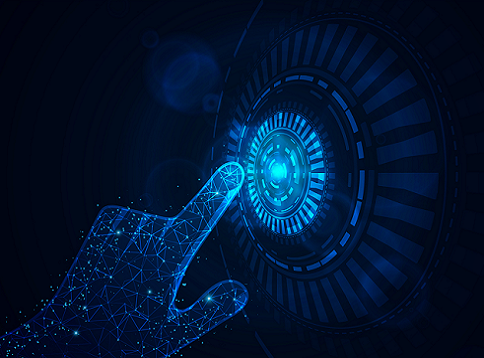Access Control Credentials and Building Security
28 July 2023

Access control credentials have become an integral and crucial element of our daily lives, protecting access to sensitive information, valuable resources and areas of the buildings we work in and pass through each day.
Access control is the practice of regulating who can access specific resources or areas, and credentials are the means by which individuals are granted that access. These credentials can take various forms, ranging from traditional methods like physical keys and identification (ID) or access control cards. to more advanced technologies such as biometric data and cryptographic tokens.
The Importance of Access Control Credentials
Access control credentials serve as a vital defence against unauthorised access to sensitive information, critical infrastructure, online services, buildings and specific areas within them. In a world where cyber threats are becoming increasingly sophisticated, the need for robust and reliable access control measures cannot be understated. Effective access control systems mitigate the risks of data breaches, insider threats, and other unauthorised activities, providing organizations and individuals alike with the peace of mind that their assets and people are protected.
Seven Types of Access Control Credentials
- Physical Credentials: are traditional forms of access control, including physical keys, swipe cards, proximity cards, and magnetic stripe cards. Physical credentials are commonly used in physical security systems for buildings, restricted areas, and certain electronic devices.
- Password-Based Credentials: one of the most common forms of access control, password-based credentials involve using a combination of alphanumeric characters as a means of authentication. However, relying solely on passwords can be susceptible to security risks, such as password reuse, weak passwords, and phishing attacks.
- Multi-Factor Authentication (MFA) Credentials: MFA involves using multiple forms of authentication to grant access, typically combining something the user knows (password), something the user has (smartphone or token), and something the user is (biometric data like fingerprint or facial recognition). MFA significantly enhances security by adding an extra layer of protection.
- Biometric Credentials: biometric credentials utilise unique physiological or behavioural characteristics, such as fingerprints, facial recognition, iris patterns, voice, or hand geometry, to authenticate individuals. Biometric authentication is increasingly popular due to its convenience and high level of security, especially with mobile phone usage and access to specific applications.
- Cryptographic Tokens: these are small hardware devices that store cryptographic keys and generate one-time passwords (OTPs) or digital signatures for authentication. Cryptographic tokens are commonly used in secure remote access and online banking applications.
- Smart Cards: are embedded with microprocessors and memory chips, capable of storing and processing data securely. They are widely used in identification, payment systems, and secure access control scenarios.
- Mobile-Based Credentials: with the widespread adoption of smartphones, mobile-based credentials have gained significantly in their popularity. Mobile devices can serve as a secure platform for storing digital credentials and facilitate MFA through biometrics or one-time password generation.
The Role of Access Control Credentials
There are many applications and areas where credentials are required for access. Examples include:
- Corporate Buildings and Manufacturing Sites: access control credentials play a pivotal role in safeguarding corporate assets, including IT areas, offices, and sensitive information. By implementing strong access control measures, businesses can protect against data breaches, theft, and industrial espionage and also help protect their staff by only allowing authorised people into specific areas.
- Hospitals, Medical Facilities and Healthcare Organisations: in the healthcare industry, access control credentials help protect patients’ medical records, pharmaceuticals, and equipment. Only authorised personnel should be allowed access to sensitive patient information and restricted areas like operating rooms.
- Education: schools, colleges and universities use access control credentials to secure campus buildings, laboratories, and research facilities. By controlling access, they can create a safer learning environment and protect valuable assets.
- Government Buildings: employ access control credentials to secure critical infrastructure, government buildings, and classified information. These measures are crucial for national security and the protection of citizen privacy.
- Information Technology Suites: in the IT realm, access control credentials are essential for securing networks, servers, and cloud-based services. System administrators often use advanced authentication methods to ensure only authorised personnel can access critical systems.
- Financial Institutions: the financial sector, banks and insurance companies rely heavily on access control credentials to protect customer accounts, financial transactions, and sensitive data. Multi-factor authentication and cryptographic tokens are commonly used to prevent unauthorized access.
When planning a building access control system one of the first tasks is to identify the user groups or classes and assign them a level of credential. This provides this group of users with access to specific areas. High-level groups may have an access all areas, at all times credential class, where as temporary workers and sub-contractors will by their nature require access to less sensitive areas of a building, and control of the times they can enter or exit areas.
Conclusion
Access control credentials serve as a fundamental cornerstone in safeguarding digital assets and personal information in today’s interconnected world. From traditional physical credentials to cutting-edge biometric and cryptographic technologies, access control systems have evolved to meet the growing demand for security and privacy. By understanding the significance of access control credentials and adopting robust authentication measures, individuals and organisations can navigate the digital landscape with greater confidence, knowing their data and resources are protected from unauthorised access and potential threats.
